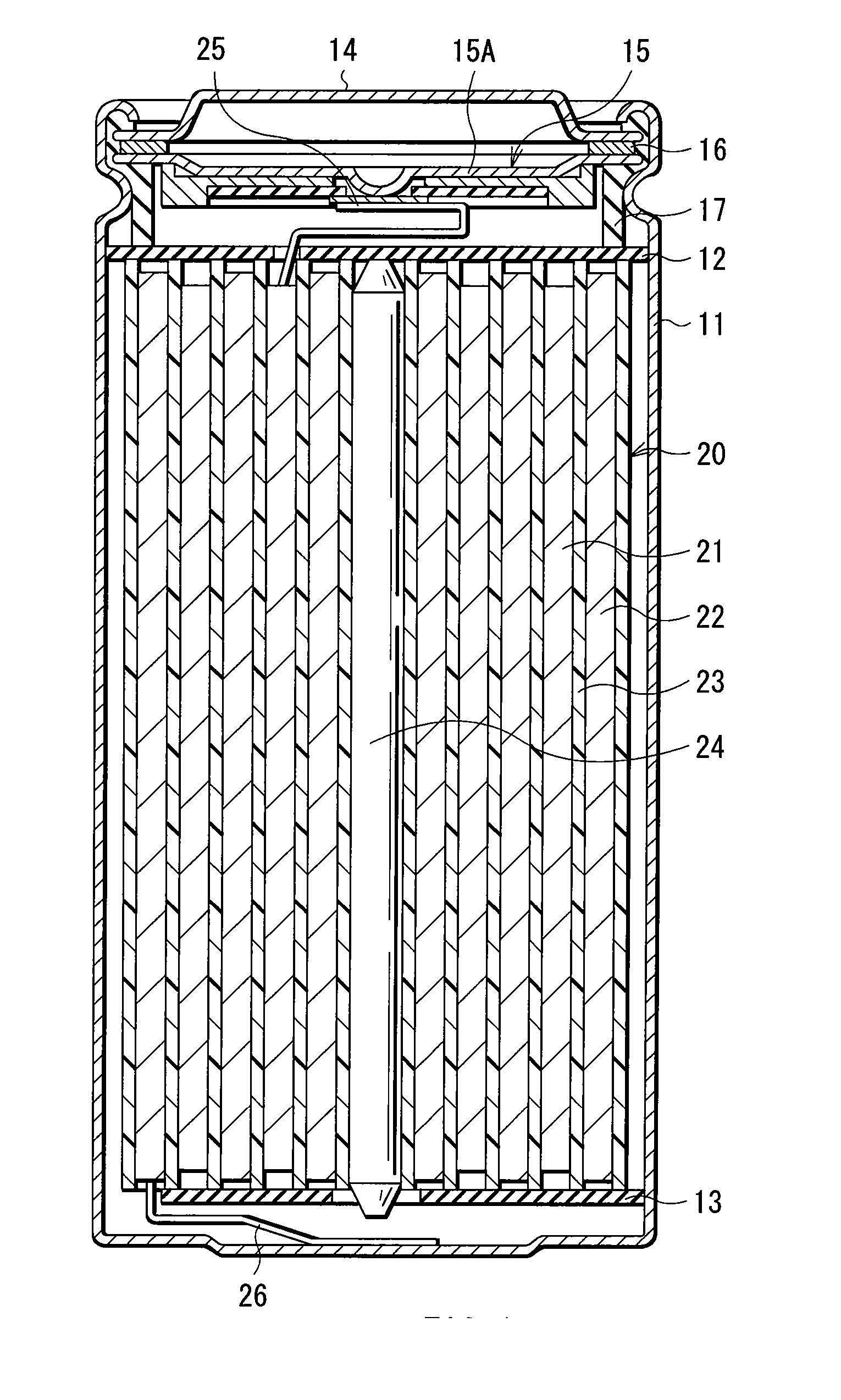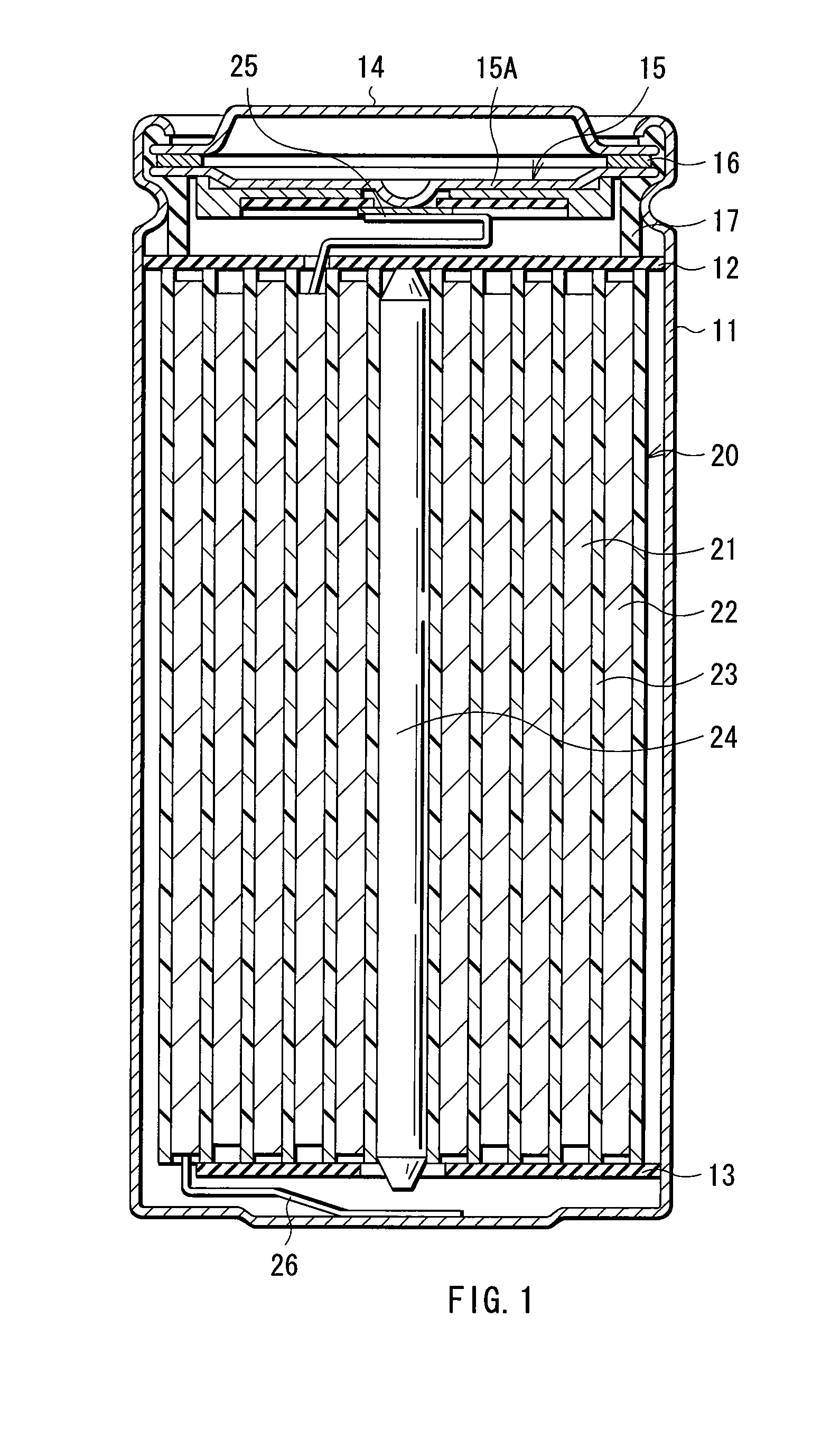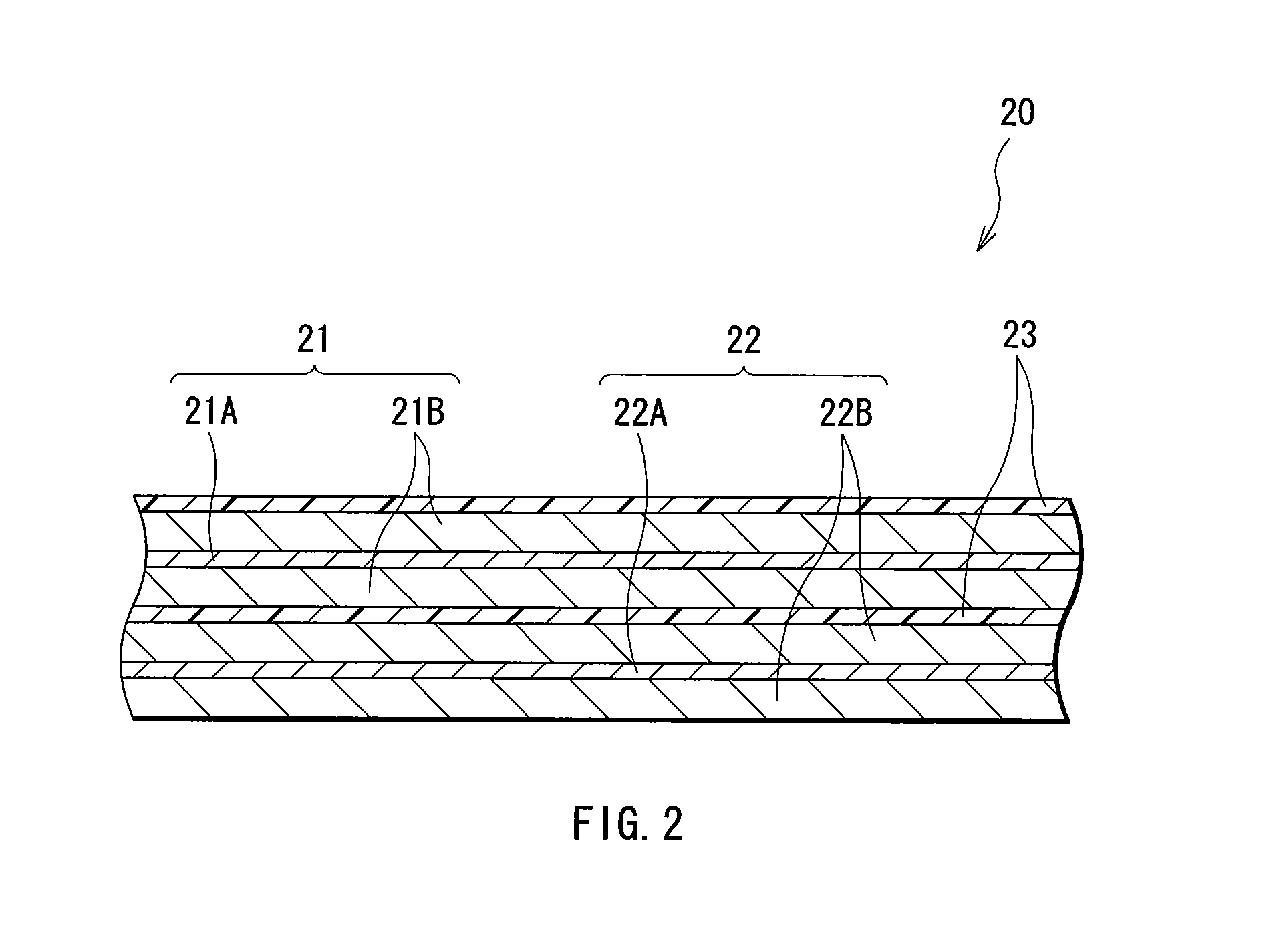Electrolytic Solution and Battery
a technology of electrolysis solution and battery, applied in the field of batteries, can solve the problems of battery characteristics being affected by high temperature conditions, and achieve the effects of preventing decomposition reaction, improving high temperature storage characteristics and high temperature use characteristics, and improving the quality of the battery
- Summary
- Abstract
- Description
- Claims
- Application Information
AI Technical Summary
Benefits of technology
Problems solved by technology
Method used
Image
Examples
examples
[0071] Specific examples of the invention will be described in detail referring to the drawings.
examples 1-1 to 1-24
[0072] Lithium-ion secondary batteries in which the capacity of an anode was represented by a capacity component by insertion and extraction of lithium were formed. The shape of each of the secondary batteries was a coin type shown in FIG. 5. In the secondary batteries, a cathode 51 and an anode 52 were laminated with a separator 53 in between, and they were sealed between a package can 54 and a package cup 55.
[0073] At first, lithium carbonate (Li2CO3) and cobalt carbonate (CoCO3) were mixed at a ratio of Li2CO3:CoCO3=0.5:1 (molar ratio), and were fired in air at 900° C. for 5 hours to obtain lithium-cobalt complex oxide (LiCoO2) as a cathode active material. Next, after 91 parts by weight of the lithium-cobalt complex oxide, 6 parts by weight of graphite as an electrical conductor and 3 parts by weight of polyvinylidene fluoride as a binder were mixed to form a cathode mixture, the cathode mixture was dispersed in N-methyl-2-pyrrolidone as a solvent to form cathode mixture slurry...
examples 2-1 to 2-23
[0086] Secondary batteries were formed as in the case of Examples 1-1 through 1-24, except that silicon was used as the anode active material, and the anode active material layer 52B was formed by an electron beam evaporation method. At that time, the composition of the solvent in the electrolytic solution was changed as shown in Table 2 in Examples 2-1 through 2-23.
[0087] Moreover, as Comparative Examples 2-1 through 2-4 relative to Examples 2-1 through 2-23, secondary batteries were formed as in the case of 2-1 through 2-23, except that 4,5-difluoro-1,3-dioxolane-2-one was not added. Regarding the composition of the solvent except for 4,5-difluoro-1,3-dioxolane-2-one, Comparative Example 2-1 corresponds to Examples 2-1 through 2-3, Comparative Example 2-2 corresponds to Examples 2-4 through 2-14, Comparative Example 2-3 corresponds to Examples 2-15 through 2-20, and Comparative Example 2-4 corresponds to Examples 2-21 through 2-23.
[0088] Charge-discharge tests were performed on ...
PUM
| Property | Measurement | Unit |
|---|---|---|
| viscosity | aaaaa | aaaaa |
| current collecting property | aaaaa | aaaaa |
| open circuit voltage | aaaaa | aaaaa |
Abstract
Description
Claims
Application Information
 Login to View More
Login to View More - R&D
- Intellectual Property
- Life Sciences
- Materials
- Tech Scout
- Unparalleled Data Quality
- Higher Quality Content
- 60% Fewer Hallucinations
Browse by: Latest US Patents, China's latest patents, Technical Efficacy Thesaurus, Application Domain, Technology Topic, Popular Technical Reports.
© 2025 PatSnap. All rights reserved.Legal|Privacy policy|Modern Slavery Act Transparency Statement|Sitemap|About US| Contact US: help@patsnap.com



